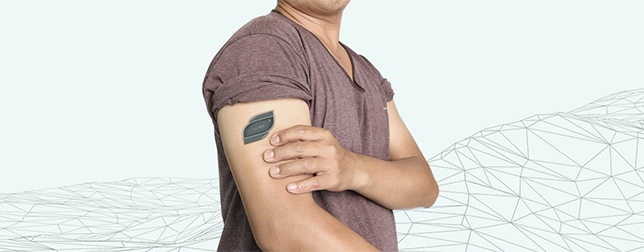Many times, when someone talks about a wearable and how it tracks your every move, people go into a frenzy and are quick to say “companies shouldn’t do that!” However, what if it could potentially save your life?
People with diabetes have the unfortunate situation where their body does not function properly regarding their insulin (which is the hormone that allows your body to use the carbs that you eat as energy). This means that they need to check their blood sugar levels one to seven times a day. To do so, patients need to prick their finger, put their blood in a little device, have the device indicate the glucose levels, and from there they can see if their levels are either too high or too low. While there have been improvements in how much blood is needed, or how fast the system gives a result, not many technological changes have been made. Until now.
New technological changes have come forth by a company called Dexcom. In the beginning of May 2018, the FDA approved their G6 model, which includes a continuous glucose monitor (CGM) system. It is a simple patch that can be placed on the patient’s skin and that has a small hair like needle that is inserted under the skin. In this fashion, the patch is able to continuously monitors the glucose levels of the patient in timely intervals. The patient is able to scan the patch, and with that see a live representation of their current blood sugar levels on their smartphone, smartwatch, or on the device provided by Dexcom. Additionally, they can then see potential fluctuations throughout the day.
Not only does it allow for people with diabetes to have a simple way to check their blood sugar levels, it also is able to indicate and reduce the chance of hypoglycemia. Hypoglycemia is when someone’s blood sugar levels go too low and could potentially cause them to go unconscious or have a seizure. When the device indicates that the patients blood sugar levels are going too low, it gives the patient a warner about the potential dangerous situation it has detected, which allows them to take the appropriate actions to avoid hazardous situations on time.
This shows how technologies are simplifying our lives and potentially saving them too. This is an amazing step in the direction of people with diabetes being able to live fulfilling and proper lives and also has the potential to increase their life expectancies due to better maintenance. Meaning that, technology is allowing people who are considered sick to live more like those who are not.
https://www.dexcom.com/g6-cgm-system
https://www.niddk.nih.gov/health-information/diabetes/overview/preventing-problems/low-blood-glucose-hypoglycemia
https://qz.com/1090683/blood-glucose-tests-for-diabetes-no-longer-require-finger-pricks/
https://www.endocrineweb.com/conditions/type-1-diabetes/what-insulin

